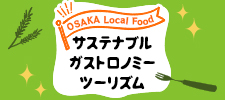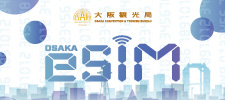
緑豊かな寺町で、天王寺七坂を踏破する!
大阪城の南側、難波宮から天王寺までの上町筋沿い周辺は、約200もの寺社が立ち並ぶエリア。かつて秀吉が寺の支配を強化し、城塞としての役目も課したという、人呼んで"お寺銀座"だ。長い歴史を秘めた寺々の多くは、拝観料なしでお参りOK。太っ腹な仏様に感謝し、しばし心身を委ねよう。民家や寺社の間を縫うように続く天王寺七坂を巡れば、時折響く子どもたちの声、木々の緑と漂う線香の匂い、合掌するお年寄りと小さな孫...。暮らしに祈りが息づく街。歩けば心がほっとする。
-
START
大阪メトロ谷町線谷町九丁目駅
-
徒歩3分生國魂神社

真言坂を上れば、そこは上町台地の北に位置する生國魂神社。樹木がそびえる境内は、広々として居心地がいい。「いくたまさん」の愛称で呼ばれるここ生國魂神社は、神武天皇が九州から大阪に上陸した折、国土の神様である生島神(いくしまのかみ)と足島神(たるしまのかみ)を祀ったのが始まりと伝えられる。本殿と幣殿を一つの屋根で繋ぐ建築様式は"生國魂造"で、日本で唯一という貴重なもの。境内には、この地で芸を披露していたという上方落語の生みの親・米沢彦八の記念碑や、井原西鶴の銅像などもある。
スポットを見る徒歩15分 -
齢延寺(れいえんじ)

源聖寺坂(下寺町一丁目源聖寺の南側から生玉寺町に至る坂)を上りきった左手にある寺。ここから見る寺町の見晴らしは素晴らしい。1620年(元和9)曹洞宗の寺として真田山に開創し、1623年に今の場所に移転。江戸時代は「齢延寺の彼岸桜」と呼ばれた桜の名所だった。幕末に私塾・泊園書院を興して活躍した儒者の藤澤東咳・南岳父子の墓がある。また、御方洪庵、斉藤方策と並ぶなにわの3名医のひとり・原老柳ゆかりの老柳観音には、病気平癒を願って訪れる参拝者が多いとか。健康を願い、思わず合掌......。
徒歩すぐ -
銀山寺(ぎんざんじ)

齢延寺と向かい合う銀山寺は、春の八重桜が見事。1591年(天正19)、大福寺と称したのが始まりで、その後、秀吉が自ら自分の画像を納めて修復し「宝樹山銀山寺」と命名した。今も旧門の瓦に五山桐紋が見られるのは、そのためだとか。「苦行仏」と呼ばれる、出家直後に厳しい修行をして悟りを開こうとする釈迦像がある。墓地には近松門左衛門の「心中宵庚申」の主人公、お千代・半兵衛の比翼塚も。
スポットを見る徒歩5分 -
萬福寺(まんぷくじ)

大通りに面した特徴のある塀に惹かれて中をのぞくと、奥には美しい庭園が。緑の空気を深呼吸し、ひととき心身ひと休み。1594年、前田利家の弟にあたる僧・開導が開いた同寺は、幕末、谷三十郎、万太郎、周平3兄弟や山崎蒸らにより「大坂新撰組屯所」が置かれた。大坂相撲力士との乱闘、石蔵屋ぜんざい襲撃事件などはこの屯所を拠点に行なわれたといい、新撰組ファンは必見だ。
スポットを見る徒歩10分 -
口縄坂(くちなわざか)

坂の下から眺めると、坂道が口縄=蛇のように見えることから、この名が付いたといわれる。が、名前に反して、石畳から石段に変わる坂道はしっとりと美しい。途中、善龍寺の庭からは春、満開のしだれ桜が咲き誇り、アマチュアカメラマンの撮影スポット。坂を上ったところには、上町台地生まれの作家・織田作之助の文学碑があり、『木の都』の一節が刻まれている。
スポットを見る徒歩15分 -
大江神社

愛染坂の隣、少し急な石段を登った先にある大江神社は、四天王寺の鎮守として聖徳太子が創祀した七宮のひとつ(他は上之宮、小儀、土塔、河堀、久保、堀越)。太子自作の毘沙門天を本尊に、四天王寺の僧が祭祀を司っている。夕陽の名所だったことから、境内には「夕陽岡」の碑があり、歌人・藤原家隆が晩年を過ごした「夕陽庵」もこの辺りにあったという。狛犬ではなく、珍しい"駒寅"が立つ同神社には阪神タイガースファンのお参りも多く、境内にはファンがお参りと共に納めたグッズがいっぱい。優勝へのけなげな思いが伝わってくる。
徒歩すぐ -
勝鬘院(しょうまんいん)/愛染堂(あいぜんどう)

大江神社を出てすぐ、「愛染まつり」でお馴染みの勝鬘院(愛染堂)へ。本尊の愛染明王は憤怒の表情だが、根は心優しい愛の神であることから、愛敬・開運を授ける仏様として、芸人さんや縁結びを願う人たちに信仰されている。本堂の裏に建つ多宝塔は、1594年に秀吉によって再建されたもので、現存する大阪市内の木造建築としてもっとも古く、国の重要文化財に指定。境内に「飲むとモテル」と書かれた井戸があるので、ぜひ飲んでみよう。
徒歩15分 -
清水坂(きよみずざか)・天神坂(てんじんざか)

清水坂は清水寺と大阪星光学院との間に伸びる石畳の坂。天神坂は伶人町と逢坂1丁目との間、菅原道真を祀る安居神社へ通じる坂。大阪は水の都と言われるが、その昔は町の井戸水の質が悪く、飲料水の確保が困難だった。そんな中、ここ天王寺は、亀井・逢坂・玉手・安井・増井・有栖・金龍の名水が湧き、天王寺七名水と呼ばれた。天神坂ちかくには大阪市建設局によるモニュメントも。一帯は閑静な住宅街が続き、水のみならず空気までもが美味しく感じる。
徒歩3分 -
安居神社

天神坂の横上に建つ安居神社は、木造でできた小さな本殿。901年、菅原道真が大宰府に左還された時、河内の伯母を訪ねる途中にここへ立ち寄って休憩したといわれ、その後、村人によって神社が創建された。一方、大阪夏の陣で負傷した豊臣方の智将・真田幸村がこの地で徳川方の急襲に遭い、戦死したと伝えられ、本殿脇には真田幸村戦死跡之碑も。
徒歩5分 -
一心寺

建築家でもある現住職の手による山門が印象的。開基は文治元年(1185年)。大坂冬・夏の陣では徳川家康の本陣となった寺で、境内には大阪夏の陣で戦死した徳川方の大名・本多忠朝の墓がある。遺骨で作る阿弥陀仏・骨仏も有名。お参りだけでなく、併設の一心寺シアター倶楽では様々な催しが開かれ、多くの人が訪れる。一心寺から天王寺公園を越えれば、天王寺駅は目の前だ。
- GOAL!
追加情報
- 味わいスポット
- 旬菜旬魚・日本料理「たかおか」がオススメ。
- お土産
- 四天王寺の梵鐘を模した名物「釣鐘まんじゅう」、浪花漬 四天王寺 西むらの天王寺蕪・毛馬胡瓜・泉州水茄子などの漬物。
- 備考
- 大阪の夏祭りの最初を飾る「愛染まつり」は6月30日(宵祭)、7月1日(本祭)、7月2日(残り福)の3日間。7月1日には華やかな宝恵籠行列も。生國魂神社では、毎年7月にいくたま夏祭、8月には大阪薪能を開催。










